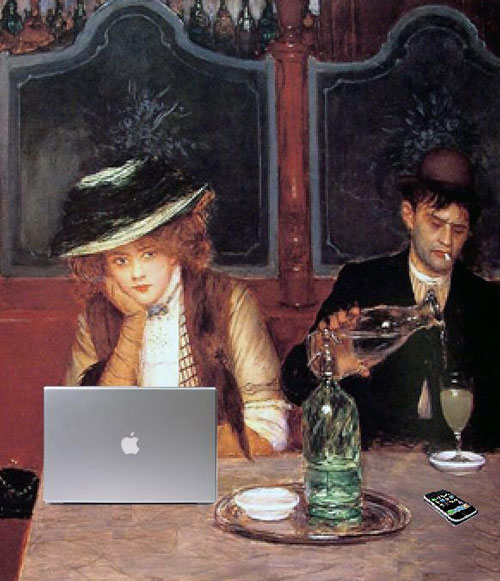
Internet dating sites claim to have brought science to the age-old question of how to pair off successfully. But have they?
For as long as humans have romanced each other, others have wanted to meddle. Whether those others were parents, priests, friends or bureaucrats, their motive was largely the same: they thought they knew what it took to pair people off better than those people knew themselves.
Today, though, there is a new matchmaker in the village: the Internet. It differs from the old ones in two ways. First, its motive is purely profit. Second, single wannabe lovers are queuing up to use it, rather than resenting its nagging. For Internet dating sites promise two things that neither traditional matchmakers nor chance encounters at bars, bus-stops and bar mitzvahs offer. One is a vastly greater choice of potential partners. The other is a scientifically proven way of matching suitable people together, enhancing the chance of “happily ever after”.
The greater choice is unarguable. But does it lead to better outcomes? And do the “scientifically tested algorithms” actually work, and deliver the goods in ways that traditional courtship (or, at least, flirtation) cannot manage? These are the questions asked by a team of psychologists led by Eli Finkel of Northwestern University, in Illinois, in a paper released — probably not coincidentally — a few days before St Valentine’s day. This paper, published in Psychological Science in the Public Interest, reviews studies carried out by many groups of psychologists since the earliest Internet dating site, Match.com, opened for business in 1995. In it, Finkel and his colleagues cast a sceptical eye over the whole multibillion-dollar online dating industry, and they are deeply unconvinced.
Blueprint for a perfect partner?
The researchers’ first observation is not so much what the studies they examined have shown, but what they have been unable to show, namely how any of the much-vaunted partner-matching algorithms actually work.
Commercially, that is fair enough. Many firms preserve their intellectual property as trade secrets, rather than making it public by patenting it, and there is no reason why Internet dating sites should not be among them. But this makes claims of efficacy impossible to test objectively. There is thus no independent scientific evidence that any Internet dating site’s algorithm for matching people together actually does enhance the chance of their hitting it off when they meet. What papers have been published on the matter have been written by company insiders who do not reveal how the crucial computer programs do their stuff.
It is, though, possible to test the value of a claim often made for these algorithms: that they match people with compatible personality traits. No doubt they do, given the number of questions on such matters on the average application form. What is assumed, but not tested, however, is that this is a good thing — that those with compatible personalities make more successful couples than those without. To examine this proposition, Finkel draws on a study published in 2010 by Portia Dyrenforth of Hobart and William Smith Colleges, in Geneva, New York.
Dyrenforth asked more than 20 000 people about their relationships, and also assessed their personalities. Members of couples with similar personalities were indeed happier than those whose partners were dissimilar. But the difference was not exactly huge. It was 0,5%. As Finkel puts it, “I wouldn’t have a problem with companies claiming that their matching algorithm could increase the chances of developing a lasting relationship by a tiny amount; I get concerned, though, when companies claim they can find your soul mate for you.”
Surely, however, the chances of finding that magic other are increased by the second thing Internet dating brings: oodles of choice? But here, too, things are not as simple as they might seem.
Some dating-site algorithms do not take the high-handed “we know best” approach but, rather, let the punter decide what he or she is looking for and then offer as many matches to those criteria as are on the website’s books.
The crucial assumption here, of course, is that what people think they want is what they actually need. That, it is true, is an assumption behind all consumer decisions. But changing your mind about a book or a washing machine chosen over the Internet is not as emotionally fraught as changing your mind about a potential sexual partner. And here, too, the data suggest people are not good at knowing what they want. One of Finkel’s own studies, for example, showed that when they are engaged in Internet dating’s cousin, speed dating, people’s stated preferences at the beginning of the process do not well match the characters of the individuals they actually like.
Indeed, even the very volume of alternatives may be a problem. Studies on consumer choice, from boxes of chocolates to restaurant wine lists, have shown that less is more. Half a dozen bonbons, or a dozen bottles, are easier to pick between than 30 or 40. And an Internet dating site may come up with not just a few dozen, but thousands of allegedly suitable matches.
The supermarket of love
Not surprisingly, the difficulty of choosing from abundance seems to apply to choice of people, too. Finkel could find no study which addressed the question directly, in the context of Internet dating. But speed-dating once again provided an answer. Here, he found studies which showed that when faced with abundant choice, people pay less attention to characteristics that require thinking and conversation to evaluate (occupational status and level of education, for example) and more to matters physical. Choice, in other words, dulls the critical faculties.
The upshot of Finkel’s review is thus that love is as hard to find on the Internet as elsewhere. That is not a reason not to use it. But you may be just as likely to luck out in the local café, or by acting on the impulse to stop and talk to that stranger on the street whose glance you caught, as you are by clicking away with a mouse and hoping that, one day, Cupid’s arrow will strike. — (c) 2012 The Economist![]()
- Image: Mike Licht, NotionsCapital.com/Flickr
- Subscribe to our free daily newsletter
- Follow us on Twitter or on Google+ or on Facebook
- Visit our sister website, SportsCentral (still in beta)




